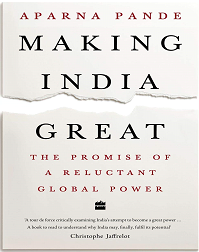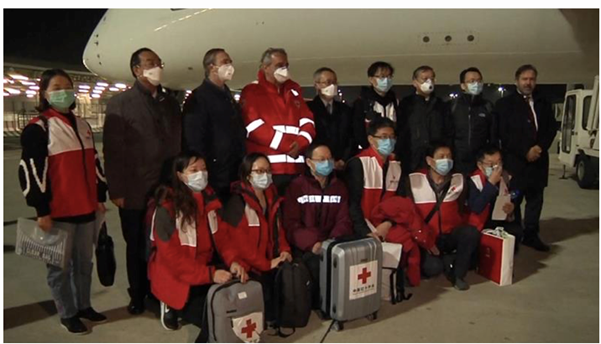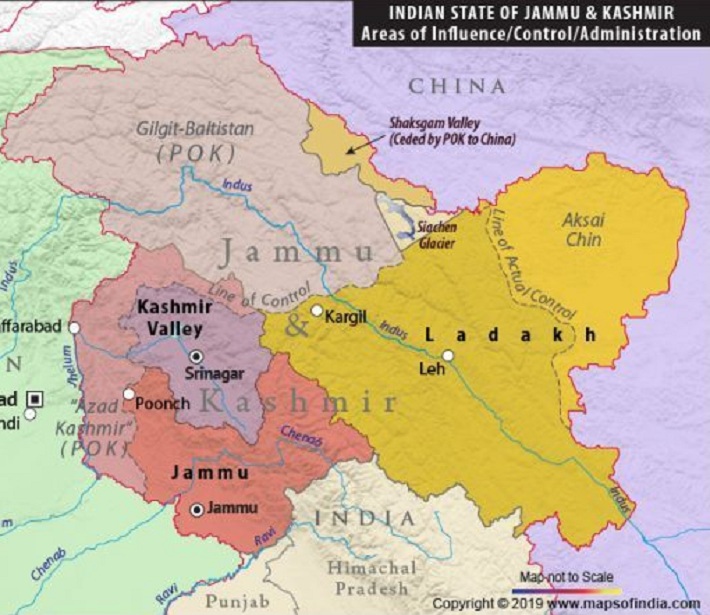Yash Johri, Research Assistant, ICS

Q1. In your first chapter you illustrate an incompatibility between the prevailing nationalism and India’s ability to effectively engage with the world community? Can you please explain this further; particularly given that nationalism in India has been electorally validated as well as the fact that it has been on the rise across the world.
I accept both presumptions, nationalism, populism and protectionism are in ascendance across the world, including in the United States where I currently reside. India isn’t unique, however, there are differences, the United States has strong institutions, the American media, judiciary as well as the political parties provide an adequate balance of power to the executive. In the Indian scenario, these institutions aren’t commensurately strong. While our founders put us on the path of a constitutional democracy in practice, we are far from achieving the same. Conversely, there has always been an alternative idea of India which we see has gained electoral validation from the late 1980s onward.
The reason I say it matters today is because we are no longer in the post-cold war era, we live in a world where anything happening around the world is on social media within a very short span of time. At a time when the world is looking at India as a counter to China, as a democratic model for the rest of the world, ally and partner with the United States or other South East Asian countries as well as to be a model developmental state within our own neighborhood, we cannot say that what is happening within cannot impact what’s happening without. Domestic politics impacts foreign policy.
If India wants to be seen as a regional power and wants acceptance from its South Asian neighbors (Bangladesh, Nepal, Sri Lanka, Maldives, Afghanistan, Pakistan, Bhutan) as well as from countries of Central Asia and Middle-East and seeks to project its power in the Indian Ocean Region and beyond then the vision of India portrayed to the outside world, has to be one that our neighborhood, extended neighborhood and the world is comfortable with. We may not like this and may say that our electorate has chosen us and others don’t have a right to criticize, but the world in the past has looked at India as a democratic, plural, multi-religious and multi-ethnic nation which despite numerous fissiparous tendencies managed to sustain high rates of growth.
Q2. Numerous analyses of India often compare it to the development story of China and how it lags behind on numerous measures, the book uses a number of these measures in the second chapter on human capital. However, India is an electoral democracy and it is true that a number of the government’s initiatives will work towards serving the platform which has elected it to power – yet at the same time the Indian people do trust the Prime Minister to deliver reform and a better standard of living. For all the criticism, the incumbent government is working on numerous initiatives such as Aayushman Bharat, National Digital Health Mission, Swachh Bharat Mission, a new National Education Policy, repeal of the Essential Commodities Act, on the digital front there’s been unparalleled global investment in the country even if its been to one corporation. Therefore, even though one can rightly question his politics, it has delivered to the country political stability. Further there is criticism on execution, that the entire government’s work can’t be remote controlled by one office and that enough ministers and domain experts are not empowered enough, is this hindering the process?
I’ll take the second part of your question first, if you are referring to the recent exits of Economists then yes, it is something which institutions like the World Bank and International Monetary Fund closely monitor. Rating agencies like Moodys and Standard & Poor also observe and ascertain who is really making decisions about the economy, they keep a close tab on the management and health of the country’s economic institutions such as the RBI and Finance Ministry.
As to the first point, I don’t understand how these new initiatives counter the arguments that I have made in my book. Forget about China, over the last few decades Bangladesh has done a better job in literacy than India has done, why is that? The question isn’t about who you are being compared to, the comparison with China is important because they are who we always benchmark ourselves against. Let’s take one step back, which of these areas have we done a good job in the past. There’s a lot that’s been started now that could have been started 6 years ago, the reason I say this is that Covid has brought to light the many glaring deficiencies in both education and healthcare. The more literate a society the better it responds to crises and listens to experts, my argument primarily is at the core one has to rebuild institutions, we have to invest in people at the primary and secondary level. We need to build the skill capacity, and this has a long gestation period. The question is why is it that even when we start and talk about reforms, we rarely bring them to fruition?
Let us give an example there are numerous policies from the UPA years, such as MNREGA. At the end of the day if an industrialised country is supposed to have 60% skilling of the workforce and India has just 7% there is a real problem which has national security implications. If you fix the primary and secondary school systems along with skills and basic healthcare there’s a lot that will take care of itself. One will not have to worry about finding a job if he/she has skills. Our challenge is that we need vocational training to provide a productive outlet for the 1.3 Billion persons of our country.
Q3. You state that there is a mismatch in strategic planning, between the civilian and military arms of the government. However, what do you think about the latest reform that’s been brought of a negative import list in the realm of defence? Do you feel that this is a result of policy being created by the newly formed office of the Chief of Defence Staff (CDS) that wishes to address this very problem by bringing civilian and military personnel under one roof or is it just further encroachment on the independent institution of the army by the political leadership?
We will have to wait a few years to see how India’s CDS and the new Department of Military Affairs (DMA) actually works. Given the strong British legacy that continues to persist in our armed forces we haven’t ever had such an office that brings civil and military actors under one roof to jointly pursue strategic goals. There have however been integrated headquarters and there has been some coordination. So, it will take a few years to find out really how effective the CDS will be? We have to bear in mind the fact that most of the new capital acquisitions will not be under CDS and DMA therefore the jury is still out. There is a likelihood that the CDS can actually bring about the coordination that India needs and there’s a chance that it doesn’t really work. We have to wait a few years to see that.
What I would say is three things. First, at the end of the day what matters is how much money we allocate to the military. If we are spending only 1.5-1.7% of our, as of now, shrinking GDP the majority of which goes in salaries and pensions, we are going to have almost nothing to modernise and purchase new equipment. Almost 65%-68% of military equipment is outdated. The People’s Liberation Army (PLA- China) which is sitting on our border and has taken our territory has allocated large funds and has rapidly modernised. If we don’t increase our budget allocations the CDS will not have the money and resources to do what he needs to do. Second, in addition to the office of the CDS what we also need is to build a systematic method of working whereby the country can plan not just a few months ahead but 10-20 years ahead for each of the services. Third, is going to be the question of what purpose is achieved by adding a layer of bureaucracy to perform powers and functions that are already being performed by the incumbent Chiefs of the Army, Navy and Air Force on the military side and the defence officials in the Raksha Mantralaya on the civil side.
Budget allocations at the end of the day are indeed a deeply political exercise. However, there is an important need to ingrain a strategic culture that becomes a mainstay in defence allocations and isn’t affected by the whims and fancies of politics. Forget external events, to deal effectively with our internal insurgencies of Naxalites, North-East, Kashmir the fight begins in the correct allocation of resources. Secondly, for us to be able to continue to fortify the foundation of our national security, it is essential that we meet the challenges of developing our economy further
At end of the it is our country. It’s like, it’s your house. The house may have certain problems and you may need to you know, rebuild the floor and you may need to breakdown a wall and build a new one, but it’s your house at the end of the day. So, you care about it, you invest in it, and you want it to last, there’s a pride in it. At the end of I’ve written this book because, I really do believe India can become great, but like most Indians my concern is that to do that we are lagging and need to accomplish things, so this is a wake-up call. My duty is to ask the questions to provoke people to start thinking about the same.
Q4. To what extent do you believe that the recent events in Ladakh between the Indian and Chinese armies have hastened India’s western embrace? Do you agree with people like Gideon Rachman, who’s recent op-ed in the Financial Times states that India has picked a side in the new cold war, because Foreign Minister Jaishankar in a recent interview on the 20th of July has stated that non-alignment was a term of a particular era and geopolitical landscape but that India will never be a part of an Alliance? While there may not be a de jure alliance, but on the ground what strategic formation do you see taking place?
I would come more on the Jaishankar side of this debate. I don’t think that we have picked a side. We have had a close relationship with the West for decades, from the 1990s our relations with not just the United States but with the United Kingdom, France, Germany as well as American allies to our East. So, I would say, its not a question of India making a Western embrace, what I would say actually is that if China thought it could teach India a lesson and India for its growing proximity to the Western liberal order then I think it has miscalculated. We are not going to stop catering to our national interest which we have been pursuing in the past, which is building closer relationships with countries with whom it sees strategic, economic and cultural ties benefitting itself. However, that won’t stop India from having a relationship with the Russians or with Iran even though these countries face western sanctions. I also believe a further deterioration of relations with China is only detrimental to our national interest. But I don’t believe it is a western embrace. I believe we are already quite close to the US and many of the western countries.
Due to connectivity and inter-dependence the question of picking a side today compared to the Cold War era is very complex and challenging one. During the Cold War there were no global supply chains, the NATO and Warsaw Pact spheres provided economic aid to help development in their respective countries. It was basically the Soviets giving us aid or helping us set up factories. Today except for in the defence industry where we are dependent on the supply parts, we don’t have a supply chain Relationship with Russia. The difference is that China has since the early 90s built a strong trading relationship with most countries, further with its new initiatives of Belt and Road it is building a strong foreign investment relationship as well. Therefore, in practice, it is very difficult to decouple.




